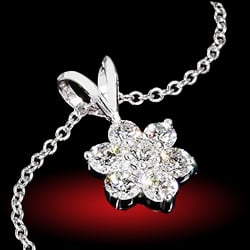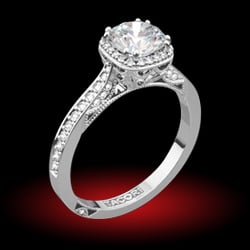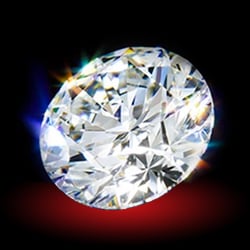AllAboardTheBlingTrain
Ideal_Rock
- Joined
- Apr 22, 2020
- Messages
- 3,469
It's actually not exactly new (few months old) but I only discovered it today. It's called 'Bad Boy Billionaires' and its actually a docu-series following different scandals and scams run by Indian billionaires, one of them is on Nirav Modi (a jeweler who ran his own eponymous brand) - episode is called Diamonds Aren't Forever. I wont give away the "details" (though its a matter of public record) but it was one of the biggest financial scams by an Indian businessperson, ever. Its a netflix production so it should be available mostly everywhere I would think.
I was interested in his story when I first heard about him, very shortly after he 'came on to the scene' in the Indian context and a lot of locals were talking about him. He basically tried to become the first Indian true luxury jewelry brand. I will say that this much is very true that the concept of a luxury jewelry brand or designer is/was pretty much non existent in India. I mean, its changing more now with highly revered fashion designers entering the jewelry game, but still, the kind of thing Nirav Modi tried to do was unique in India and honestly could've been what first spelled trouble for him (for example, most of these design bigwigs are still focusing on the traditional/bridal market, very few in the western-style high jewelry segment. With a few notable exceptions, even if these 'brands' charge more for labor, the difference is nothing like how it is in the US - e.g. compare the prices of a Tiffany setting to an equally competent artisan, and Tiffany's labor charge is probably 3-4x or more, this is not how it is in India for the most part). But also - I had my doubts even back then when he was at his peak about the sustainability of his plans in India - the acceptability of high labor charges is much lower there. I know quite a few women who have breathtaking jewelry collections and could definitely afford to pay his prices (yes, anecdote and not data to follow but still interesting) and we spoke about this back then and they all said the same thing - overpriced from an Indian context. There was precious little amongst his collection that a really good local jeweler in your big Indian cities couldn't make (maybe one or two designs). I'm not going to say that Indians aren't brand conscious, because they obviously can be and conspicuous consumption is very much a part of the culture. But in my opinion his jewelry wasn't recognizable enough, not like the Cartier Love or a Birkin handbag. There were obviously people who bought his stuff, but not regularly. Again, conspicuous consumption comes into play - if you could afford one of his everyday fine jewelry bracelets, you would probably buy a Cartier Love instead because most people recognized the latter and the price range was similar. (Just generalizing here for sake of conversation). I'm not going to spoil the details of all his activities so that the documentary is still interesting, but it basically sparkled a tangential train of thought in me which I thought you all might enjoy.
So all in all - defintely worth a watch, also because they do show pics/vids of some of the pretty baubles and some are really breathtaking!
I was interested in his story when I first heard about him, very shortly after he 'came on to the scene' in the Indian context and a lot of locals were talking about him. He basically tried to become the first Indian true luxury jewelry brand. I will say that this much is very true that the concept of a luxury jewelry brand or designer is/was pretty much non existent in India. I mean, its changing more now with highly revered fashion designers entering the jewelry game, but still, the kind of thing Nirav Modi tried to do was unique in India and honestly could've been what first spelled trouble for him (for example, most of these design bigwigs are still focusing on the traditional/bridal market, very few in the western-style high jewelry segment. With a few notable exceptions, even if these 'brands' charge more for labor, the difference is nothing like how it is in the US - e.g. compare the prices of a Tiffany setting to an equally competent artisan, and Tiffany's labor charge is probably 3-4x or more, this is not how it is in India for the most part). But also - I had my doubts even back then when he was at his peak about the sustainability of his plans in India - the acceptability of high labor charges is much lower there. I know quite a few women who have breathtaking jewelry collections and could definitely afford to pay his prices (yes, anecdote and not data to follow but still interesting) and we spoke about this back then and they all said the same thing - overpriced from an Indian context. There was precious little amongst his collection that a really good local jeweler in your big Indian cities couldn't make (maybe one or two designs). I'm not going to say that Indians aren't brand conscious, because they obviously can be and conspicuous consumption is very much a part of the culture. But in my opinion his jewelry wasn't recognizable enough, not like the Cartier Love or a Birkin handbag. There were obviously people who bought his stuff, but not regularly. Again, conspicuous consumption comes into play - if you could afford one of his everyday fine jewelry bracelets, you would probably buy a Cartier Love instead because most people recognized the latter and the price range was similar. (Just generalizing here for sake of conversation). I'm not going to spoil the details of all his activities so that the documentary is still interesting, but it basically sparkled a tangential train of thought in me which I thought you all might enjoy.
So all in all - defintely worth a watch, also because they do show pics/vids of some of the pretty baubles and some are really breathtaking!








300x240.png)